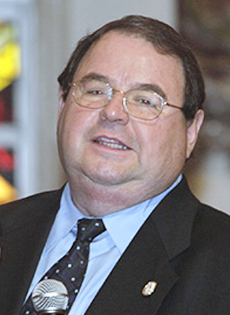
History of the eucharistic celebration V: The Eucharist of the martyrs
Monday, January 27, 2020
*Rogelio Zelada
The second century begins with the illumination of the great martyr bishop, St. Ignatius of Antioch (Antakya in Turkish), who in his Letter to the Ephesians, at the beginning of the second century, urges the baptized to participate enthusiastically in the divine Eucharist along with the bishop, gathered around a single altar and one Christ Jesus, to give glory to God.
In the year 165, St. Justin, a layman who was martyred in Rome, describes how the Eucharist was then celebrated:
“All who live in cities or in the country gather in one place, and the memoirs of the apostles or the writings of the prophets are read, as long as time permits; then, when the reader has ceased, the president verbally instructs, and exhorts to the imitation of these good things. Then we all rise together and pray... when our prayer is ended, bread and wine and water are brought, and the president in like manner offers prayers and thanksgivings, according to his ability, and the people assent, saying Amen; and there is a distribution to each, and a participation of that over which thanks have been given, and to those who are absent a portion is sent by the deacons.”
The expression “according to his ability,” used by Justin, referred to the usual practice that whoever presided over the Eucharist improvised and created his own text, always faithful to the structure used by Jesus in the Upper Room.
By the beginning of the third century, the communities will prefer to build their own houses of prayer and abandon the custom of meeting in the house of one of the brothers. The Sunday Eucharist will be imbued with a real and great concern for the poor. The “Didascalia of the Apostles” reminds the bishop that: “If a poor man or a poor woman come … appoint a place for them with all thy heart, O Bishop, even if thou hast to sit on the floor.” It is a time of great intensity in the faith and many Christians did not hesitate to put their fidelity to Christ before any other possible consideration. Attending the Sunday Eucharist always entailed the possibility of facing death, and the celebration of Christ's Supper was held many times in an environment of farewell and martyrdom.
In the third century, in the Cemetery of Callixtus, Pope Sixtus II, the clergy and a good number of faithful who had gathered to celebrate the Eucharist were accused of holding a forbidden meeting and immediately beheaded. The persecutors set aside Deacon Lawrence to publicly subject him to cruel torture and burn him alive on an iron grill. The acts of martyrdom, written to remember the heroism and faithfulness of Christians, continually reproduce the dialogue between judges and believers: “What were you doing gathered on the day of the sun?” (then a normal day of work). The answer was always the same: “We cannot live without celebrating the Lord's Supper.”
The honor and importance of a community were measured according to the number of martyrs they accumulated in their events. In the face of Roman power, which sought to erase from the earth everything related to the Christian faith, the community preserved the living memory of those who had given their lives for love of Christ and his Gospel. For this, the Roman funeral rites were adapted and given a new meaning. Christians began to gather at the tomb of the martyr not on the anniversary of his birth but on the date of his martyrdom, his true “dies natalis,” not to read his writings or remember his deeds, but to read the Gospels; not to have a family funeral meal, but to celebrate the Lord's Supper. Thus, little by little and seamlessly, celebrating the anniversary of a community member’s martyrdom caused the celebration of the Eucharist to take place on other days, not just on Sundays.
The legend that Christians gathered in the catacombs to celebrate liturgical worship in honor of the martyrs corresponds mostly to the imagination of some novelists, who centuries later, when recounting these terrible moments of the Church, placed these liturgical meetings inside these underground Christian cemeteries. The catacombs were long and dark galleries excavated in volcanic tuff, a very light limestone, which hardens when it comes in contact with air. It was the work of slaves, of the “fossiarii,” to excavate the stone. They had to cover their faces with cloths soaked in strong and fragrant resins to enter the chambers. During the years of the cruel persecution of the Christians, it was practically impossible to access the catacombs, where there would usually be hundreds of decomposing corpses. Once the persecutions were over, the catacombs became a place of pilgrimage; spaces were enlarged to make chapels and many wanted to be buried in such sacred places alongside the martyrs, those who had offered the sacrifice of their lives for fidelity to Christ, the martyr par excellence.


Comments from readers